What's New
Displaying results 911 - 920 of 4052
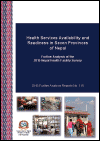
Resource | Publications,
The overall objective of this report is to provide health care delivery system program managers with information on the level of availability of basic and essential services in health facilities and the extent of preparedness of the facilities to provide quality health services in each of the seven provinces of Nepal. Following release of the report of the 2015 Nepal Health Facility Survey, the Ministry of Health and Population identified the need to disaggregate the survey results at the province level to allow policymakers to better determine how best to allocate available resources among the provinces. This report is intended to help fill this objective.
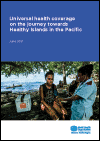
Resource | Publications,
This report presents the current status of UHC across PICs by reviewing key health service, finance and outcome indicators such as immunisation, access to improved drinking sources, current health expenditure and etc.
This report summarizes key findings from literature review, interviews and a technical consultation: three cross-cutting and interrelated implementation challenges faced by PICs in pursuing the Healthy Islands vision and UHC, with a particular focus on PHC.
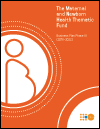
Resource | Publications,
The third phase of UNFPA’s Maternal and Newborn Health Thematic Fund (MHTF), from 2018 to 2022, lays out a roadmap for providing maternal and newborn health through a people-centered, human rights-based approach. Fully aligned to UNFPA’s Strategic Plan (2018-2021), the MHTF directly contributes to UNFPA’s transformative result of “ending preventable maternal deaths.”
For Phase III, the MHTF has broadened its scope to further contribute to achieve universal access to sexual and reproductive health and rights, and accelerating progress towards the International Conference on Population and Development (ICPD) Programme of Action. Its focus on maternal health includes support to newborn health, which is explicitly reflected in Phase III as maternal and newborn health are indivisible.
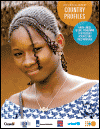
Resource | Publications,
Over the past decade, child marriage has continued to decline. Globally, the proportion of young women who were married as children decreased from 1 in 4 to about 1 in 5. It is now estimated that a total of 650 million girls and women alive today were married as children.
However, the current rate of decline in child marriage is not sufficient to meet the SDG target of ending child marriage by 2030. What's more, the reduction in child marriage has been uneven. While South Asia has led the way on reducing child marriage, the global burden is shifting to sub-Saharan Africa, where rates of progress need to be accelerated dramatically to reduce the prevalence and offset population growth.
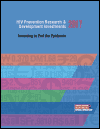
Resource | Publications,
Flat and/or reduced funding for HIV/AIDS and other global health issues threatens to roll back progress worldwide. There is belated and widespread acknowledgment of a prevention crisis that can only be addressed by taking today’s tools to scale while researching new ones. Given this backdrop, the report is a powerful advocacy tool. This year’s report notes troubling trends in investment flows for biomedical HIV prevention at a moment of major promise in the research landscape. The report tracks the origins, trends and direction of global funding as well as the resulting effect(s) on the prevention research funding landscape.
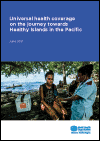
Resource | Publications,
This report presents the current status of UHC across PICs by reviewing key health service, finance and outcome indicators such as immunisation, access to improved drinking sources, current health expenditure and etc.
This report summarizes key findings from literature review, interviews and a technical consultation: three cross-cutting and interrelated implementation challenges faced by PICs in pursuing the Healthy Islands vision and UHC, with a particular focus on PHC.
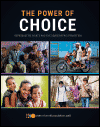
Resource | Publications,
Not so long ago, most people had large families: five children, on average. Where once there was one global fertility rate, today there are many, with differences wider than at any point in human history. Family size, whether small or large, is intertwined with reproductive rights, which are tied to many other rights, such as those to health and education, adequate income, the freedom to make choices, and non-discrimination.
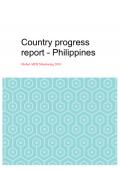
Resource | Publications,
At the 2011 United Nations General Assembly High-Level Meeting on AIDS that took place in June in New York, Member States adopted a new Political Declaration which contained new targets to effectively respond to the AIDS epidemic. The 2011 Political Declaration mandates UNAIDS to support countries in reporting back on progress made towards achieving the new commitments. It also provides for the UN Secretary-General to report regularly to the General Assembly on progress achieved in realizing these commitments.
The HIV epidemic in the Philippines has been rapidly changing and expanding in the past five years. From a low and slow to fast and furious epidemic, the number of diagnosed HIV infections has increased dramatically to 31 cases a day. Currently, there are a total of 50,725 diagnosed HIV cases from January 1984 to December 2017 reported in the HIV/AIDS and ART Registry of the Philippines (HARP).
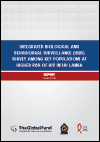
Resource | Publications,
HIV prevalence in Sri Lanka is less than 0.1%, characterized as a low-level epidemic, according to the National STD and AIDS Control program (NSACP). Data amongst key populations is required to evaluate and guide national responses, and currently minimal data is available for key populations in Sri Lanka. Two previous surveys, a behavioural surveillance survey undertaken in 2006/7 and an integrated biological surveillance survey (IBBS) in 2014/15, showed low HIV and syphilis prevalence across all key populations with presence of risk behaviour and low knowledge around HIV.
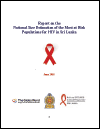
Resource | Publications,
This report describes the process and the results of the size estimation study of key populations (KPs) in Sri Lanka, which was based on the methods of the geographical mapping with enumeration and the multiplier, as well as the results of the consensus-building workshop that utilised the Delphi process to arrive at the final population size estimates (PSE). Following KPs were included in the size estimation study: female sex workers (FSWs), men who have sex with men (MSM), male sex workers (MSW), transwomen, people who inject drugs (PWID) and beach boys (BBs).





